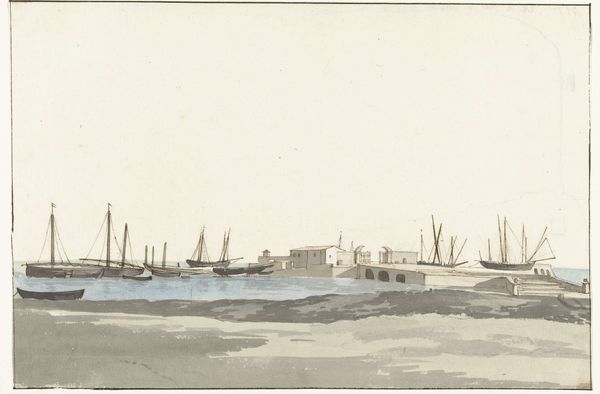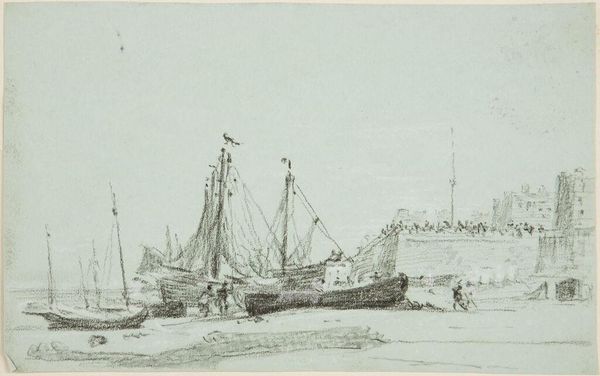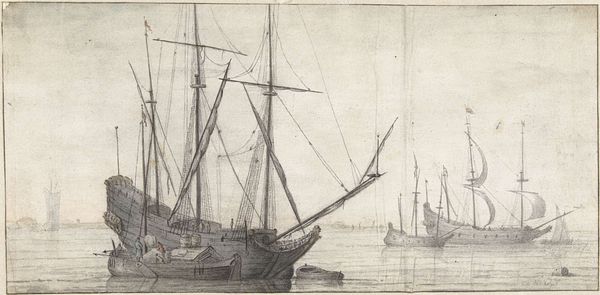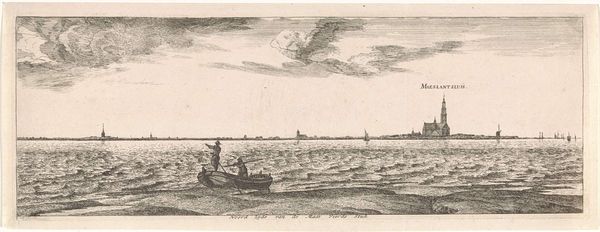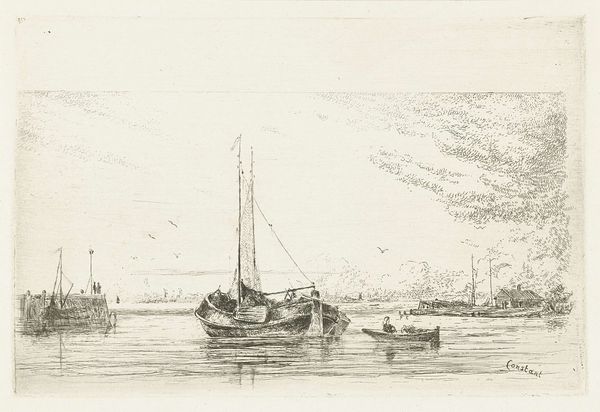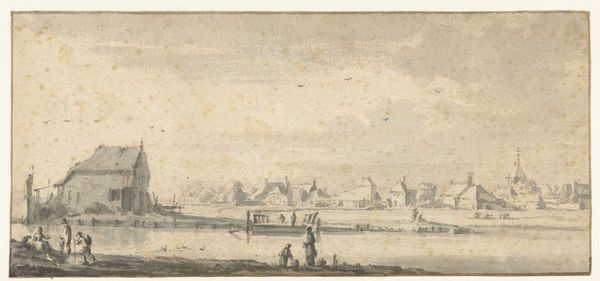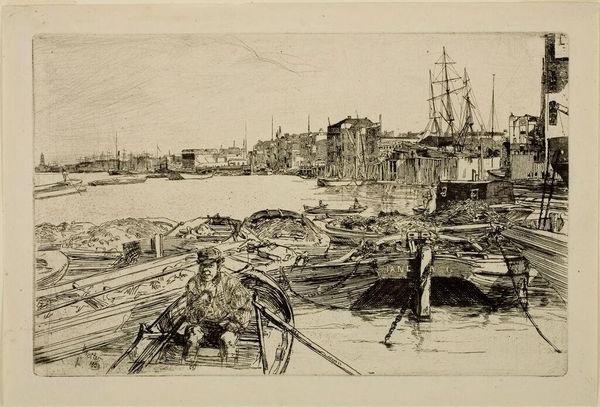
drawing, paper, ink
#
drawing
#
dutch-golden-age
#
landscape
#
charcoal drawing
#
paper
#
ink
#
coloured pencil
#
cityscape
#
watercolor
#
realism
Copyright: Public domain
Rembrandt van Rijn made this drawing, Schellingwou seen from the Diemerdijk, with pen and brown ink, using brown wash on paper. Ink on paper is a humble combination of materials, yet in Rembrandt’s hands, this scene of the Netherlands unfolds before us with striking clarity. Look at the range of textures he achieves, from the rough foreground to the distant horizon, and note how the brown wash creates depth and atmosphere. In the 17th century, the Dutch Republic was a world power, fueled by maritime trade. Drawings like this were not just artistic exercises; they documented the landscape, capturing the spirit of a nation built on its connection to the water. The process of drawing itself, with its immediacy and portability, allowed artists to record their impressions of the world around them, contributing to a growing sense of national identity. By paying close attention to materials, making, and context, we can appreciate the rich tapestry of meaning woven into this seemingly simple drawing, and challenge traditional distinctions between fine art and craft.
Comments
No comments
Be the first to comment and join the conversation on the ultimate creative platform.
